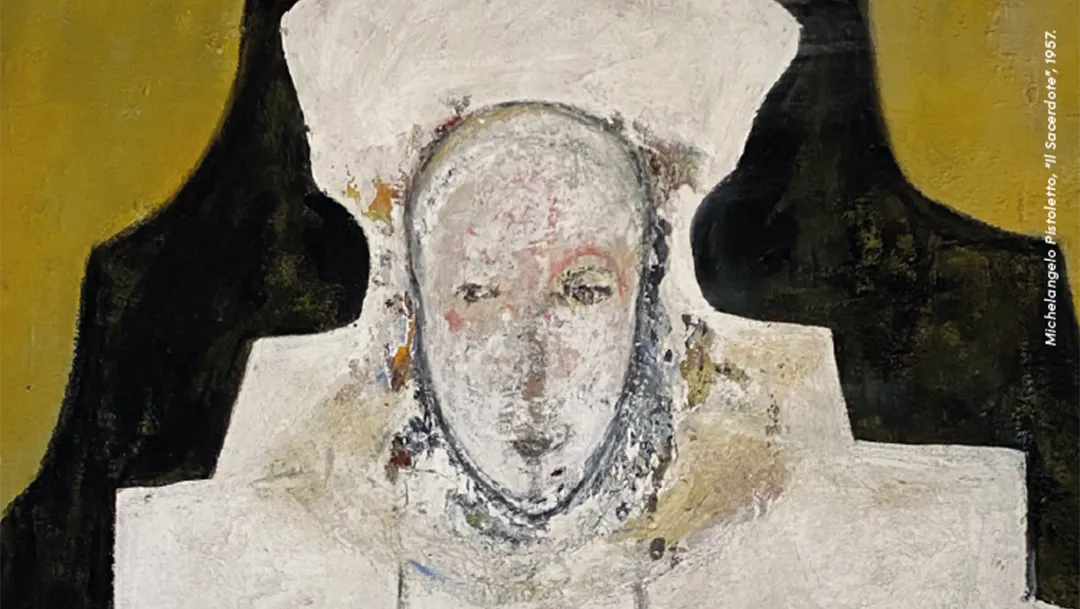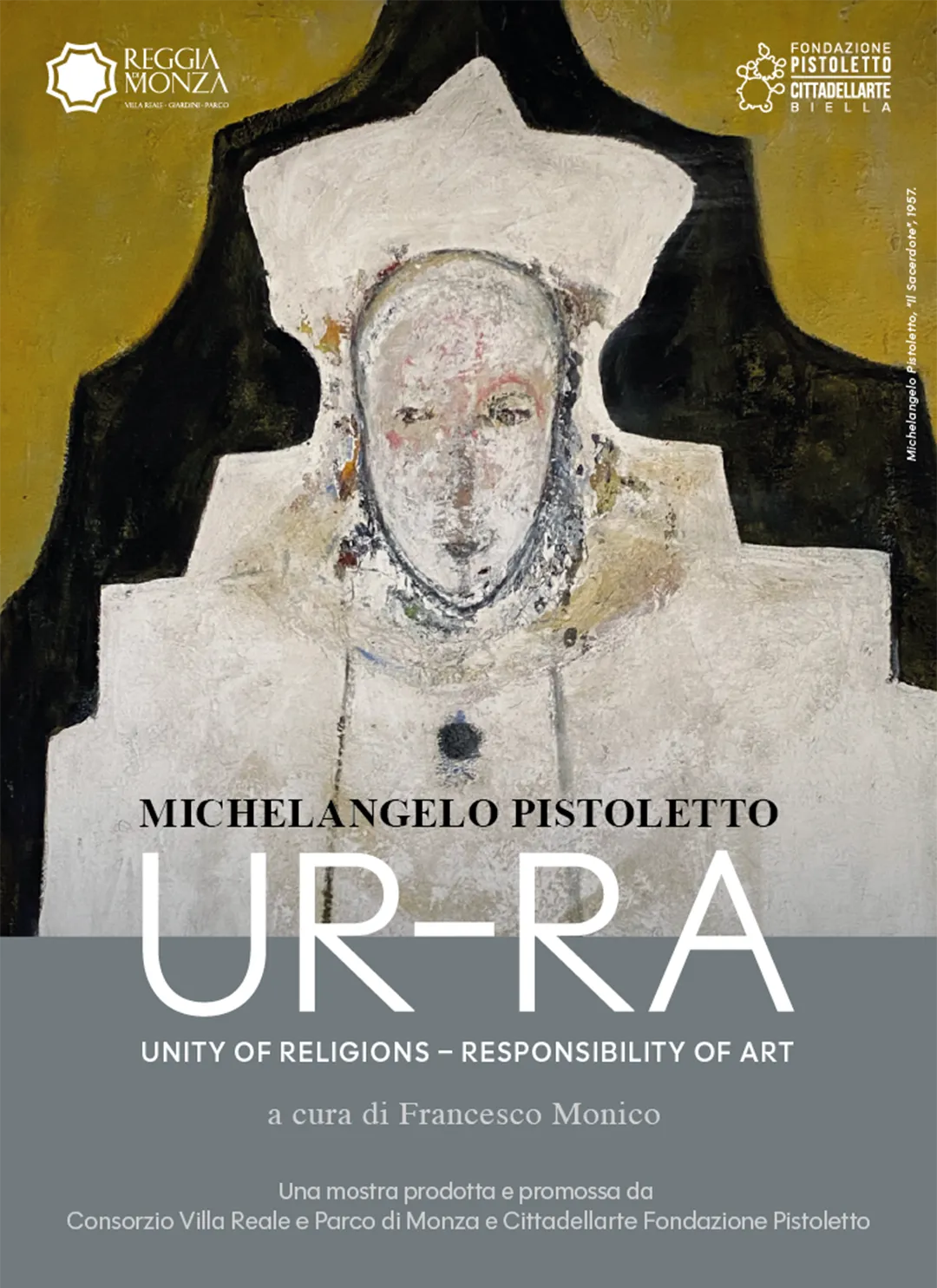What can we
help you find?
Ricerche suggerite

Michelangelo Pistoletto's exhibition "UR-RA – United Religions Responsibility of Art" opens at the Royal Palace of Monza.
From November 1, 2025, to October 31, 2026, the spaces of the Villa Reale will host the retrospective curated by Francesco Monico: a journey spanning over sixty years of artistic research, featuring historic works and new installations, forging a dialogue between art and spirituality. The exhibition aims to be a multidimensional experience and a laboratory for preventive peace, culminating in the signing of the Monza Charter for Interreligious Diversity.
The Royal Villa of Monza (Reggia di Monza) presents UR-RA – Unity of Religions – Responsibility of Art by Michelangelo Pistoletto. Promoted and produced by the Consorzio Villa Reale e Parco di Monza and Cittadellarte Fondazione Pistoletto, the exhibition, curated by Francesco Monico, was specifically designed for the evocative spaces of the residence. The Villa was planned in the late eighteenth century by the architect Giuseppe Piermarini for Archduke Ferdinand of Austria, the son of Empress Maria Theresa, and is now part of the European Royal Residences, the prestigious network uniting royal residences that bear witness to the history and identity of Europe.
Twenty-five years after the inauguration of the Lieu de recueillement et prière (Place of meditation and prayer) at the Paoli-Calmettes Oncological Institute in Marseille, which brought together major religions in a single space, Michelangelo Pistoletto continues his initiative to position art as a tool for interreligious and intercultural dialogue. For this demanding work, he has collaborated with Francesco Monico, an author and academic who has directed faculties, doctoral programs, and Fine Arts academies.
At the heart of UR-RA Unity of Religions – Responsibility of Art is an anthology of the works of Maestro Pistoletto, a central figure in Arte Povera and the creator of the Quadri specchianti (Mirror Paintings), famous for iconic works like La Venere degli stracci (The Venus of the Rags) and the project Il Terzo Paradiso (The Third Paradise). The exhibition halls of the Royal Villa will display his first oil paintings from 1957 up to his latest works where spirituality is clearly expressed. The event is conceived as a multidimensional experience that connects art, spirituality, and religions against the backdrop of Pistoletto’s core commitment: Preventive Peace. The goal is to highlight the role of art as a universal language, capable of promoting harmony, peaceful coexistence, and mutual understanding among different cultures and religions.
"At the end of the 19th century, with the advent of photography, artists stopped representing society and began developing a self-analysis of art itself, eventually reaching the total affirmation of the individual autonomy of each artist. This is how the ancient correlation, correspondence, and cooperation between art and religion in the Western world was interrupted, creating a profound existential distance between them, and the artist, in the 1940s and 50s, found himself in total solitude. Personally, in 1961, I transformed the canvas of my self-portrait into a mirroring surface and overcame my existential isolation by opening the work to the living participation of all existence which finally appeared within the picture. My self-portrait became the self-portrait of the world, and every person became a protagonist of the work with me. Religions became indispensable to art again because art now reconnects the individual to the world. Indeed, religion means religare—to join, connect, link. With UR-RA – Unity of Religions – Responsibility of Art, we are reconnecting the two worlds, art and religion, to create a new world together." This is the artist Michelangelo Pistoletto's statement, offering a deep and personal answer to why the exhibition is being held.
"The dawn of humanity opens with the artistic phenomenon: the hands impressed on the walls of Paleolithic caves mark the human being’s emergence into a spiritual dimension," explains the curator Francesco Monico. "In that primordial gesture, there is not just survival, but the recognition of an inner freedom that has accompanied our history ever since. UR-RA – Unity of Religions – Responsibility of Art gathers this legacy and relaunches it: art as a territory of freedom, a space in which human consciousness experiments. With Maestro Michelangelo Pistoletto and the representatives of the great religious traditions—Hinduism, Judaism, Christianity, and Islam—we wanted to continue that ancient reflection, bringing it into the present. Just as art gave form to the spiritual at the origins, today it can still be a bridge between differences, a place for discussion and dialogue. Art as the root of humanity, as responsibility, as a promise of shared and dialoguing thought: only this is the condition for there to be a future, meaning new imaginaries. A future that can only exist by pursuing Preventive Peace, which is necessary and due so that a new path—the one the 21st century urgently needs—can emerge from confrontation."
The Flags of Religions, placed in the Avancorte (Forecourt) of the Royal Villa of Monza, will accompany visitors to the start of the actual exhibition path. This path will open in the octagonal Atrio degli Staffieri (Grooms' Atrium) with La Pietra dell’infinito e Tavola interreligiosa per la pace preventiva (The Stone of Infinity and Interreligious Table for Preventive Peace), a reinterpretation of the Metro Cubo d’infinito (One Cubic Meter of Infinity), part of the group of works called Oggetti in meno (Minus Objects) created between 1965 and 1966. The exhibition will then continue through the rooms of the First Piano Nobile (Noble Floor), where other emblematic works can be observed, such as Il Sacerdote(The Priest), Tempio (Temple), Annunciazione (Annunciation), Le trombe del Giudizio (The Trumpets of Judgment), Tempio a Dondolo (Rocking Temple), La rotazione dello specchio (The Rotation of the Mirror), Il codice trinamico (The Trinamic Code), Arco spirituale (Spiritual Arch). It will culminate in the Royal Gardens, which will host a new Terzo Paradiso composed of one hundred benches made of entirely recycled and recyclable material.
"The Royal Villa opens its doors to a new encounter with the 'contemporary' that will last a whole year: following the ongoing experience of Reggia Contemporanea—a blend of the building's harmonious classicism and the art of the Twentieth and Twenty-first centuries—the silent dialogue between art and architecture is enriched with a new exhibition path that connects the works of Michelangelo Pistoletto, a recognized Master of contemporary art, with the architecture and noble environments of the Palace. A whole year of exhibition and meetings will be a formidable opportunity for those already familiar with his work, but also for the curious visitor open to discovery: in a time that rushes and seemingly 'has no time,' the exhibition and meetings will be a challenge to confront the work of a man who over the years has developed a broader vision of art as a tool for reconciliation, dialogue, and collective responsibility. And because art is often prophecy, a clear vision of what is often obscure to many, welcoming his works, listening to his words, and meeting him may be an extra chance for hope in a period that sometimes fiercely denies its possibility," is the hope expressed by Paolo Pilotto, President of the Consorzio Villa Reale e Parco di Monza and Mayor of Monza.
"When, thanks to the collaboration of Francesco Monico, the opportunity arose to work together with Michelangelo Pistoletto to create a space for comparison between the main spiritual traditions and secular thought, using art as a ground for open dialogue and exchange, we had no hesitation," explains the General Director of the Consorzio Villa Reale e Parco di Monza, Bartolomeo Corsini. "The Royal Villa of Monza is a gentle architecture, which over the centuries has hosted many hopes and which combines solidity, measure, and harmony in its appearance—substantial qualities for fostering a creative process capable of generating new shared scenarios. We are ready to support the concept of Preventive Peace and to spread it through the universal language of art and spirituality."
Art and spirituality, therefore, are at the center of a responsible transformation and a practice that involves and engages various sectors of society, from medicine to finance, and from literature to education.
Thus, the exhibition will be enriched by four international conferences dedicated to crucial and current topics:
- Medicine, Care, and Spirituality: explores the link between human sciences, medicine, and spirituality, aiming to strengthen empathy and clinical practice.
- Finance, Economy, and Spirituality: brings the Western financial model into dialogue with the Islamic one, promoting reflections on economic ethics.
- Poetry, Literature, and Spirituality: addresses the value of poetic and narrative language in religions, analyzing the impact of languages on forms of thought.
- Education, Knowledge, and Spirituality: reflects on the educational and cognitive transformations produced by Artificial Intelligence, involving leading figures in the academic and higher education sectors.
One of the final goals of the exhibition is the signing of the Monza Charter for Interreligiosity, a document aimed at consolidating cooperation among Hinduism, Buddhism, Judaism, Christianity, Islam, and secular culture.
For more information on how to visit, please consult the Royal Villa of Monza website.






